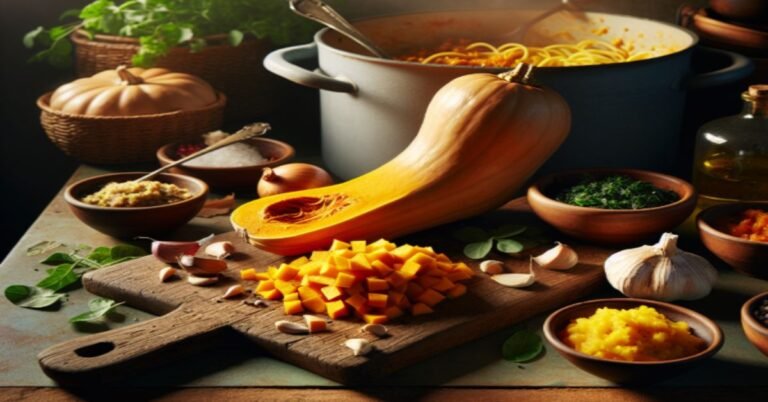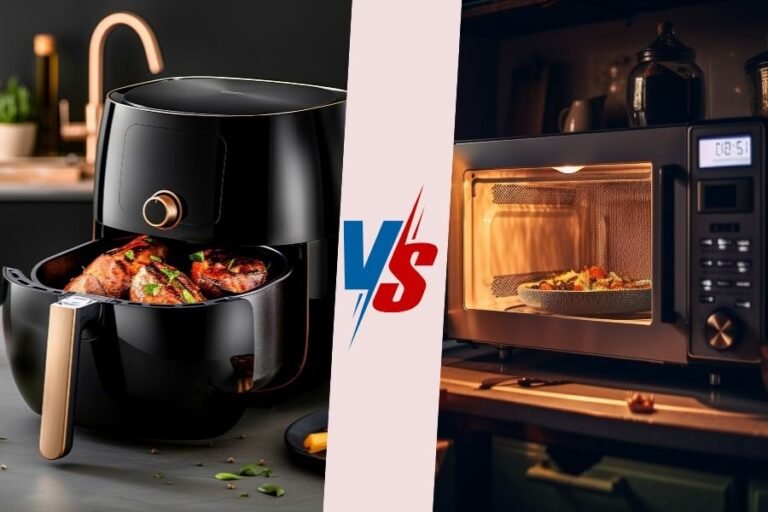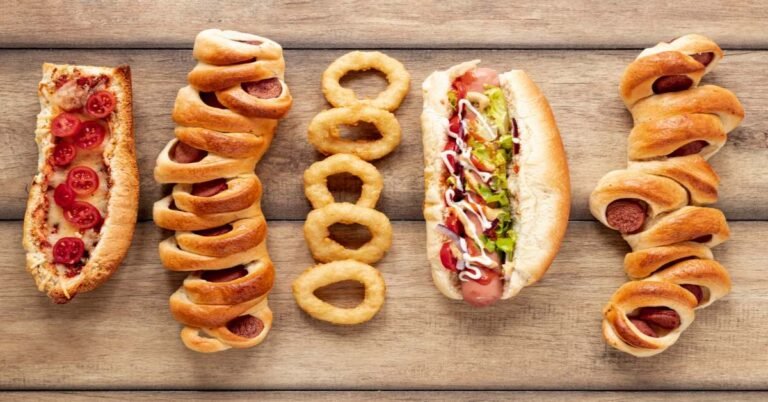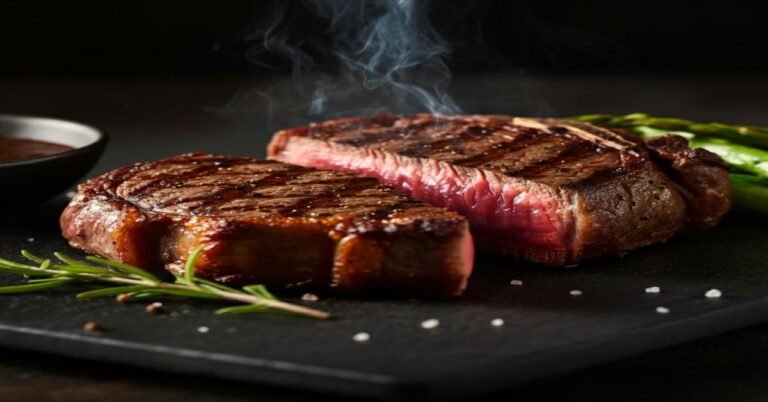Air fryer Cooking tips and tricks | 10 Mind-Blowing Hacks
Imagine transforming humble vegetables into irresistible snacks, recreating fast-food favorites at home, or even baking a cheesecake – all in your air fryer! From mastering the basics to unlocking advanced techniques, this blog post will reveal 10 mind-blowing hacks that will elevate your air fryer game. Whether you’re a novice or an experienced user, get ready to discover tips and tricks that will revolutionize your cooking, save you time, and tantalize your taste buds. If you have a total zero knowledge of an air fryer, don’t worry! Follow our best air fryer for beginners guide.
We explore the secrets of perfect preheating, clever accessory usage, and creative culinary applications that will make your air fryer the most versatile tool in your kitchen. Get ready to impress your family and friends with restaurant-quality meals, all while maintaining a healthier lifestyle. Let’s dive into the world of air fryer mastery and unlock its full potential!
Mastering the Basics of Air Fryer Cooking
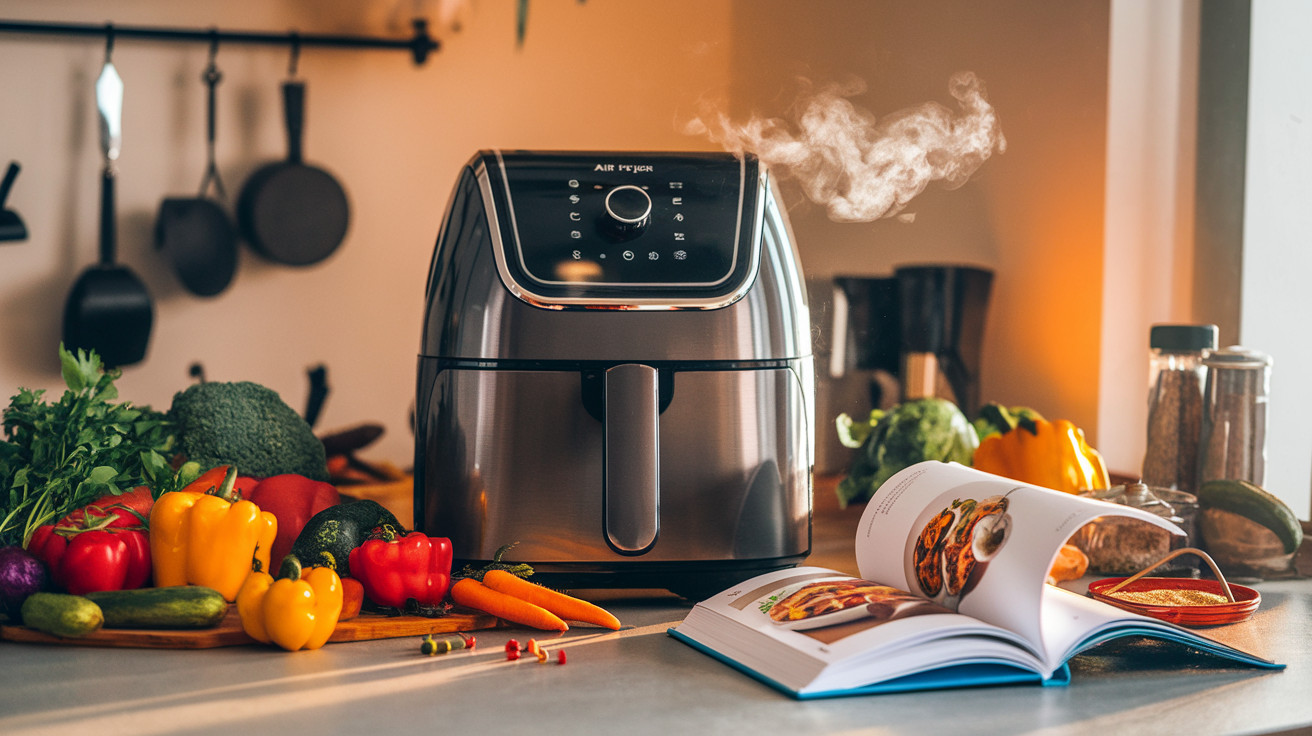
Preheating for faster and more efficient cooking
Preheating your air fryer is a crucial step for achieving optimal cooking results. While some models may not require it, most air fryers benefit from a 5-minute preheat. This ensures the appliance reaches the ideal temperature before you add your food, leading to faster and more efficient cooking.
Using minimal oil for crispy results
One of the key advantages of air fryers is their ability to create crispy textures with minimal oil. Unlike deep fryers, air fryers circulate hot air to cook food, requiring only about a tablespoon of oil for most recipes. This small amount is sufficient to achieve a crispy exterior while keeping the food healthier than traditional frying methods.
Shaking or flipping food for even cooking
To ensure even cooking and maximum crispiness, it’s essential to shake the basket or flip the food halfway through the cooking process. This technique promotes uniform heat distribution and helps achieve a consistent texture throughout the dish.
Avoiding overcrowding for optimal air circulation
Overcrowding Effects Proper Spacing Benefits
Uneven cooking Even heat distribution
Soggy texture Crispy results
Longer cooking times Faster cooking
Inconsistent flavors Uniform taste
One common mistake to avoid is overcrowding the air fryer basket. Proper spacing allows for optimal air circulation, crucial for achieving crispy and evenly cooked food. Here are some tips to prevent overcrowding:
- Cook in batches if necessary
- Use a single layer of food when possible
- Leave space between food items
- Consider the size of your air fryer when planning meals
By mastering these basic air fryer cooking techniques, you’ll be well on your way to creating delicious, crispy meals with minimal oil and maximum efficiency. With these fundamentals in mind, we’ll explore how to enhance your food preparation techniques, taking your air fryer cooking to the next level.
Enhancing Food Preparation Techniques
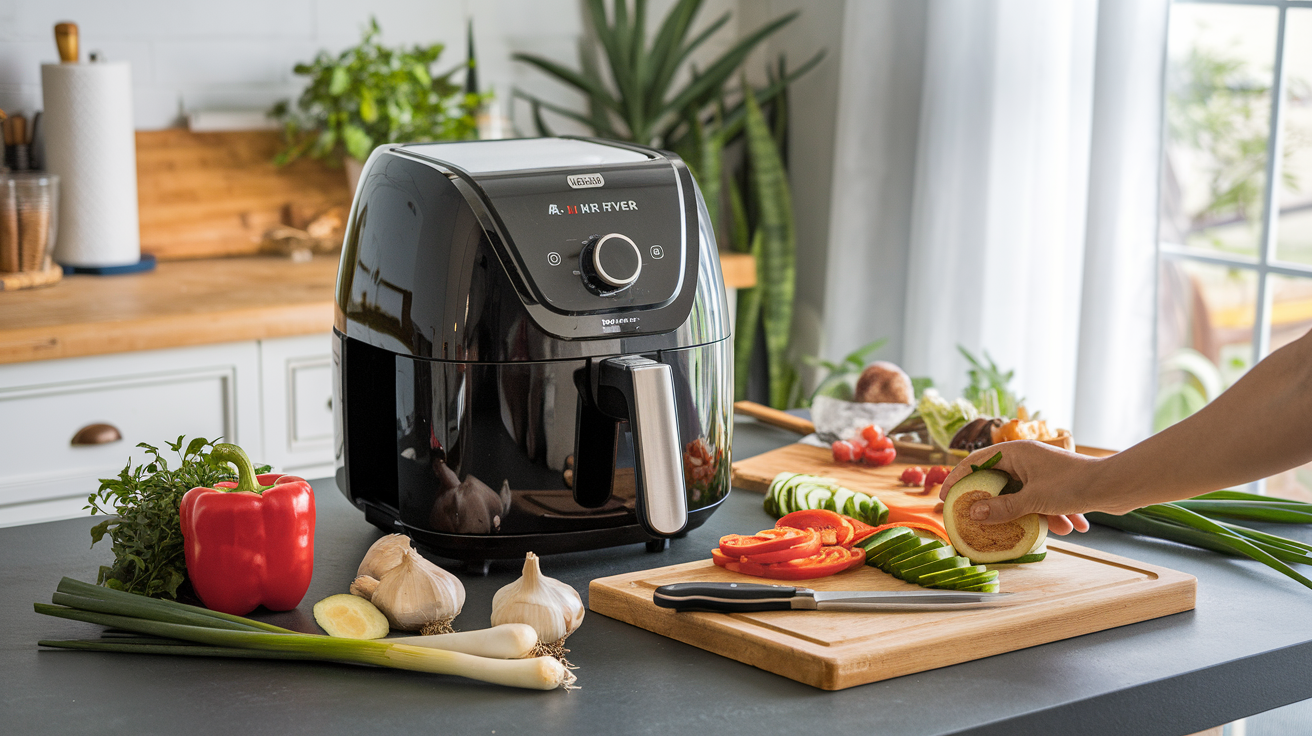
Now that we’ve covered the basics of air fryer cooking, let’s delve into some advanced techniques to enhance your food preparation. These tips will help you take your air fryer game to the next level, ensuring delicious and perfectly cooked meals every time.
Using parchment paper with holes to prevent sticking
One common issue with air fryers is food sticking to the basket. To combat this, use parchment paper with holes. This clever hack allows for easy cleanup while still maintaining proper air circulation. Here’s how to do it:
- Cut a piece of parchment paper to fit your air fryer basket
- Use a hole punch to create small holes throughout the paper
- Place the parchment in the basket before adding your food
This method is particularly useful when cooking marinated items or foods with cheese toppings.
Applying wet rubs for better seasoning adherence
To enhance flavor and ensure your seasonings stick to your food, try using wet rubs instead of dry seasonings. Here’s a simple process:
- Mix your favorite spices with a small amount of oil
- Apply the wet rub to your food before air frying
- Cook as usual, enjoying the improved flavor and texture
Dry Seasoning Wet Rub
May fall off during cooking Adheres better to food
Can burn easily Less likely to burn
Limited flavor infusion Deeper flavor penetration
Thawing frozen vegetables to avoid sogginess
While air fryers are great for cooking frozen foods, vegetables can sometimes turn out soggy. To prevent this:
- Thaw frozen vegetables before cooking
- Pat them dry with a paper towel
- Lightly coat with oil and seasonings
- Air fry at a high temperature (around 400°F) for crispy results
Securing cheese toppings with toothpicks
Prevent your cheese toppings from flying around in the air fryer by using toothpicks. This simple trick works wonders for dishes like stuffed chicken or cheesy vegetables:
- Place your cheese on top of the food
- Secure it with one or two toothpicks
- Cook as usual, removing the toothpicks before serving
Remember to flip your food and shake the basket periodically for even cooking. These techniques will help you achieve restaurant-quality results at home.
With these enhanced food preparation techniques in your arsenal, you’re ready to expand your air fryer’s versatility even further. In the next section, we’ll explore creative ways to use your air fryer beyond traditional recipes, opening up a world of culinary possibilities.
Expanding Your Air Fryer’s Versatility
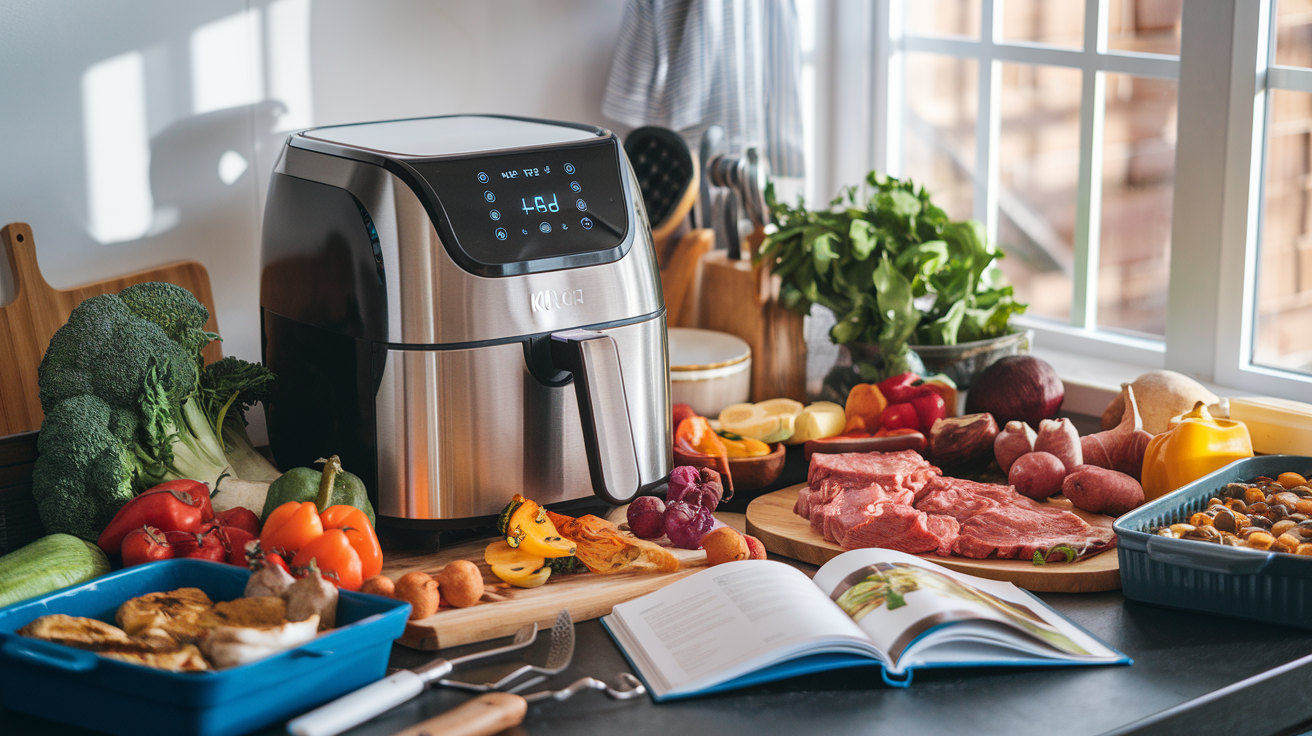
Now that we’ve covered enhancing food preparation techniques, let’s explore how to expand your air fryer’s versatility beyond basic cooking.
Making healthier snacks like homemade vegetable chips
Air fryers excel at creating crispy, healthier alternatives to traditional fried snacks. Homemade vegetable chips are a perfect example. Simply slice vegetables thinly, lightly coat them with oil, and air fry for a few minutes. This method works well for potatoes, carrots, and even kale, resulting in crunchy, nutritious snacks with minimal oil.
Toasting bagels and reheating leftovers
Your air fryer can double as a toaster and microwave replacement. Toasting bagels in the air fryer results in a crispy exterior while maintaining a soft interior. For reheating leftovers, the air fryer’s circulating hot air ensures even heating and helps restore crispiness to foods like pizza or fried chicken.
Cooking eggs and baking desserts
Surprisingly, air fryers are excellent for preparing eggs and desserts:
- Hard-boiled eggs: Cook at 250°F for 17-18 minutes
- Frittatas: Use a circular pan, cook at 375°F for 15 minutes
- Cookies: Bake chocolate chip cookies without heating the house
- Apple crisp: Quick and easy dessert option
- Churros: Healthier alternative to deep-fried versions
Dehydrating fruits and vegetables
Air fryers can also function as food dehydrators. Here’s a comparison of items you can dehydrate:
Food Item Temperature Time
Apple slices Low 6-8 hours
Banana chips 135°F 6-8 hours
Herbs Low 2-4 hours
Vegetable chips 135°F 6-8 hours
This versatility extends to making dried herbs for tea, such as dandelion roots, and creating homemade fruit leather. The air fryer’s controlled temperature and air circulation make it an excellent tool for preserving foods through dehydration.
With these expanded uses in mind, we’ll next explore clever hacks for achieving even better results with your air fryer, further enhancing its capabilities in your kitchen.
Clever Hacks for Better Results
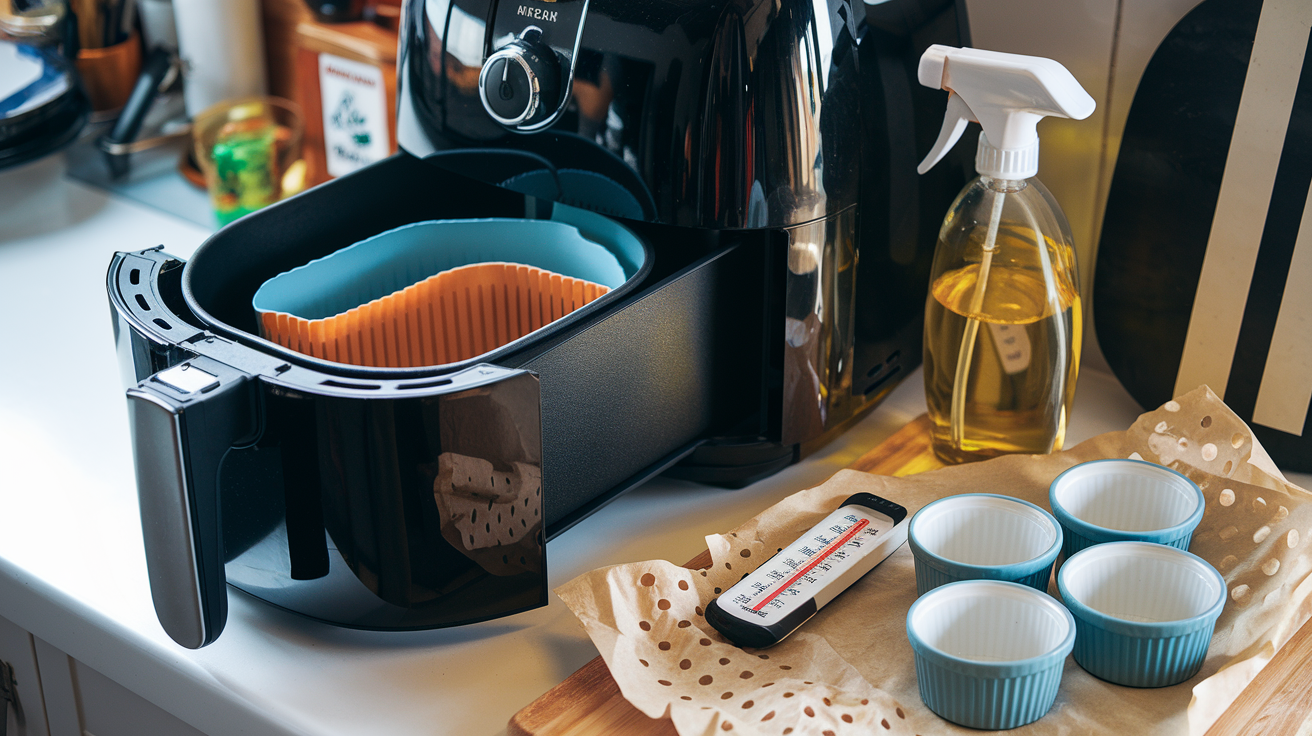
Now that we’ve explored how to expand your air fryer’s versatility, let’s dive into some clever hacks that can help you achieve even better results. These tricks will take your air frying skills to the next level, ensuring crispy, flavorful, and perfectly cooked dishes every time.
Adding oil midway through cooking for extra crispness
For those seeking the ultimate crispy texture, try adding a small amount of oil halfway through the cooking process. This technique can significantly enhance the crispiness of your food without compromising on the health benefits of air frying. Remember to use oils with higher smoke points, such as canola or sunflower oil, to avoid unwanted flavors.
Using a slice of bread to absorb excess grease
When cooking fatty foods like bacon or sausages, place a slice of bread at the bottom of the air fryer basket. This clever hack helps absorb excess grease, resulting in less mess and potentially healthier meals.
Employing accessories to expand cooking options
Air fryer accessories can greatly enhance your cooking possibilities. Here’s a quick guide to some useful additions:
Accessory Purpose
Parchment paper Prevents sticking and makes cleanup easier
Silicone molds Perfect for egg bites or small cakes
Oven-safe dishes Allows for baking and roasting various foods
Toothpicks Secures cheese toppings or layered ingredients
Adding water to reduce smoke during cooking
To minimize smoke production, especially when cooking fatty foods, add a small amount of water to the bottom of the air fryer basket. This simple trick can make a significant difference in reducing smoke and unpleasant odors during the cooking process.
Additional tips for better results:
- Use wet rubs instead of dry rubs for better seasoning adherence
- Avoid overcrowding the basket to ensure even cooking
- Periodically shake or flip food for uniform crispiness
- Preheat your air fryer for optimal cooking results
By implementing these clever hacks, you’ll be able to achieve restaurant-quality results right in your kitchen. With these techniques mastered, we’ll next explore how to optimize cooking times and temperatures to further perfect your air frying skills.
Optimizing Cooking Times and Temperatures

Now that we’ve covered clever hacks for better air fryer results, let’s dive into optimizing cooking times and temperatures to elevate your air frying game even further.
Reducing oven recipe times by 20% for air frying
When converting traditional oven recipes to air fryer settings, a good rule of thumb is to reduce both the temperature and cooking time. Lower the temperature by 25°F and shorten the cooking time by approximately 20%. This adjustment accounts for the air fryer’s more efficient heat circulation, ensuring your food cooks evenly without burning.
Verifying cooking temperatures with a meat thermometer
To guarantee perfectly cooked meats, always use a meat thermometer to verify internal temperatures. Here’s a quick reference guide for common meats:
Meat Type Internal Temperature
Chicken Breast 165°F
Bacon 145°F
Fish 145°F
Cooking frozen meats without thawing
One of the air fryer’s greatest advantages is its ability to cook frozen foods effectively. You can cook frozen meats directly without thawing, saving time and maintaining food safety. However, keep in mind that cooking times may need to be adjusted. For instance:
- Frozen chicken breasts: Cook at 375°F for about 25-28 minutes
- Frozen fish fillets: Cook at 400°F for approximately 12-15 minutes
Always ensure the internal temperature reaches safe levels before consuming.
Adjusting settings for different types of food
Different foods require varying temperatures and cooking times for optimal results. Here’s a brief guide:
- Vegetables: 375°F for 10-15 minutes
- Fried foods: 400°F for 8-12 minutes
- Baked goods: 325°F for 15-20 minutes
Remember to flip food halfway through cooking for even results, and avoid overcrowding the basket to ensure proper air circulation.
With these optimized cooking times and temperatures, you’ll be well on your way to air fryer mastery. Next, we’ll explore essential maintenance and care tips to keep your air fryer in top condition, ensuring it continues to deliver delicious, crispy meals for years to come.
Maintenance and Care Tips
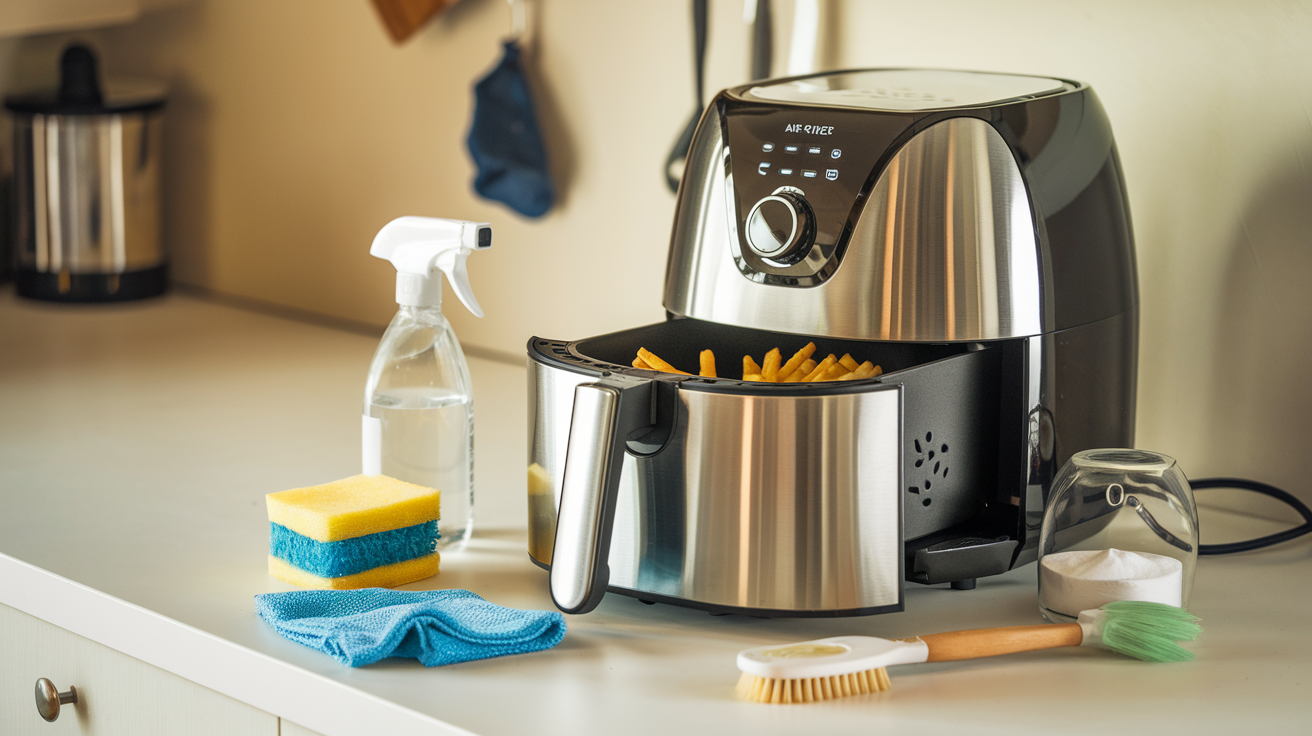
Now that we’ve covered optimizing cooking times and temperatures, let’s delve into the crucial aspect of maintaining your air fryer for optimal performance and longevity.
Avoiding aerosol cooking sprays to protect the appliance
Protecting your air fryer’s non-stick coating is essential for its longevity. Avoid using aerosol cooking sprays, as they can damage the coating and lead to performance issues. Instead, opt for oils with high smoke points, such as avocado oil. You can apply these oils using a brush or a refillable oil sprayer for even distribution.
Hand washing components to prolong lifespan
To ensure your air fryer’s components last longer:
- Unplug and cool the appliance after each use
- Remove the basket and tray
- Wash with warm, soapy water
- Dry thoroughly before reassembling
Avoid putting components in the dishwasher, as this can reduce their lifespan. For stubborn residue, soak the parts in warm, soapy water before cleaning.
Regular cleaning for optimal performance
Consistent cleaning is key to maintaining your air fryer’s efficiency:
Cleaning Frequency Tasks
After each use - Wipe down removable parts and interior
- Clean the fryer basket and vent
Weekly - Clean the interior and coil thoroughly
Monthly - Perform a deep clean of all components
For lingering odors, place a ramekin with lemon juice or vinegar in the basket and run the air fryer for a few minutes.
Understanding and utilizing various air fryer settings
Familiarize yourself with your air fryer’s settings to maximize its potential:
- Adjust temperatures for high-fat foods to minimize smoke production
- Follow recipe instructions closely, as settings may vary between models
- Conduct a “toast test” with new air fryers to gauge cooking settings
- Use bread during cooking to absorb excess grease without affecting flavor
By maintaining your air fryer properly and understanding its functions, you’ll ensure consistent performance and delicious results. With these maintenance tips in mind, we’ll next explore creative culinary applications to expand your air-frying repertoire.
Creative Culinary Applications

Now that we’ve covered essential maintenance and care tips for your air fryer, let’s explore some creative culinary applications that will take your air frying experience to the next level.
Replicating fast food favorites at home
Air fryers excel at recreating beloved fast food items with a healthier twist. You can easily make crispy chicken tenders by using crushed potato sticks or cheese crackers in the breading for added flavor. For a unique spin, try wrapping bacon around your chicken tenders before air frying. Air fryer chicken wings are another popular choice, offering a juicy interior and crispy exterior without excessive oil.
Transforming basic vegetables into appealing dishes
Your air fryer can turn ordinary vegetables into delectable side dishes or snacks. Here are some ideas:
- Zucchini fries: Coat sliced zucchini in a seasoned breading for a crispy, low-carb alternative to traditional fries.
- Garlic-rosemary Brussels sprouts: Toss Brussels sprouts with garlic and rosemary before air frying for a flavorful side dish.
- Air-fried okra: Perfect for Southern cuisine enthusiasts, this crispy okra is a healthier version of the classic.
Vegetable Seasoning Cooking Time
Zucchini Italian herbs 8-10 minutes
Brussels sprouts Garlic, rosemary 10-12 minutes
Okra Cajun spices 6-8 minutes
Making unconventional items like cheesecake
Believe it or not, your air fryer can even handle desserts! While it might seem unconventional, you can make delicious treats like chocolate chip oatmeal cookies and peanut butter cookies in your air fryer. For a more elaborate dessert, try air fryer donuts made from canned biscuits, which you can customize with various glazes.
Creating a variety of quick and easy snacks
Air fryers are perfect for whipping up tasty snacks in no time. Here are some crowd-pleasing options:
- Air fryer egg rolls: Use store-bought coleslaw for a quick and easy filling.
- Crispy air fryer falafel: A healthier alternative to deep-fried versions.
- Air fryer taquitos: Ideal for game day snacking.
- Air fryer jalapeño poppers: A spicy treat that’s sure to impress.
With these creative culinary applications, you can expand your air fryer repertoire beyond basic recipes. As we move on to the next section about maximizing flavor and nutrition, we’ll explore how to enhance the taste and healthfulness of your air-fried creations even further.
Maximizing Flavor and Nutrition
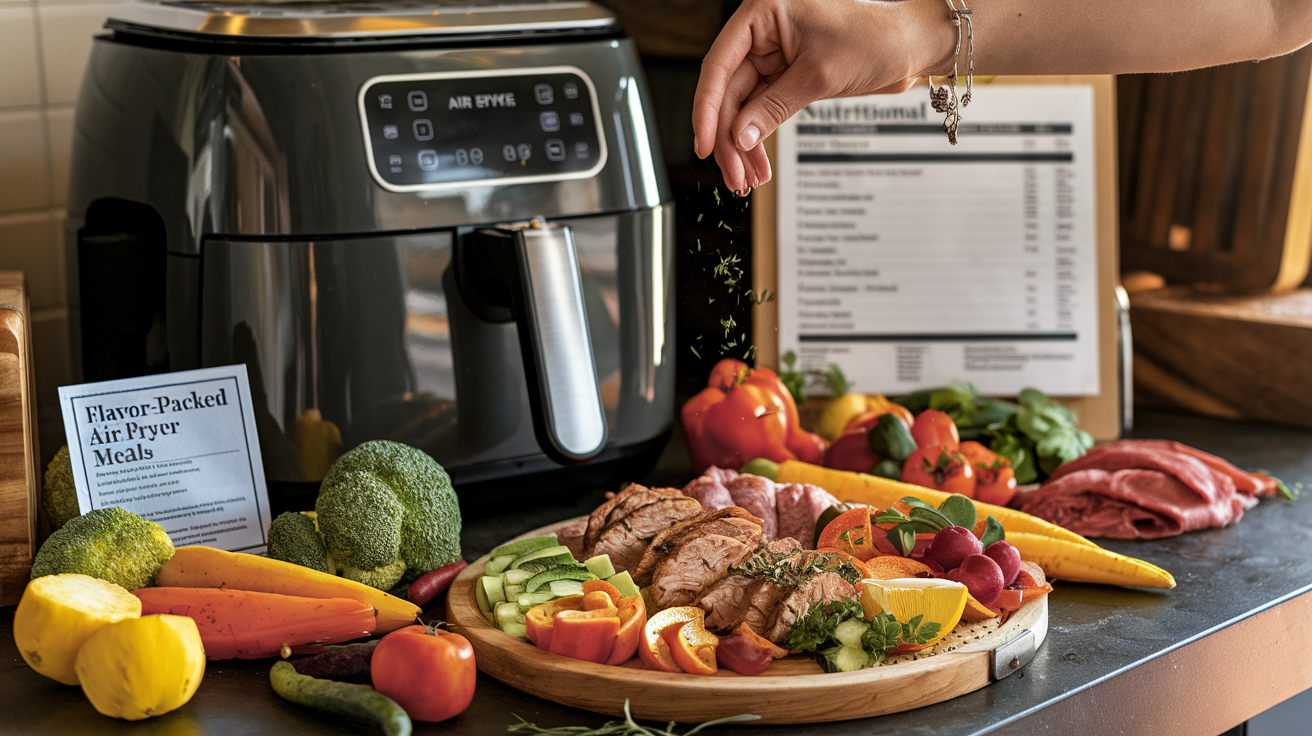
Now that we’ve explored creative culinary applications for your air fryer, let’s dive into maximizing flavor and nutrition in your air-fried dishes. By implementing these techniques, you’ll elevate your air fryer cooking to new heights of deliciousness and healthfulness.
Saving pan drippings for enhanced sauces and gravies
While air frying typically produces less drippings than traditional frying methods, you can still make the most of the flavorful juices that collect at the bottom of your air fryer basket. These drippings can be used to create delicious sauces or gravies, adding depth to your dishes without compromising on health.
Using combination cooking methods for best results
To achieve optimal texture and flavor, consider combining air frying with other cooking techniques. For instance:
- Marinate proteins before air frying
- Pre-cook dense vegetables in the microwave
- Finish dishes under the broiler for extra crispiness
Preparing healthier versions of fried foods
Air frying allows you to enjoy your favorite fried foods with significantly less oil. Here’s a comparison of traditional frying versus air frying for popular dishes:
Dish Traditional Frying (Calories) Air Frying (Calories)
Chicken Tenders 550 280
French Fries 320 180
Falafel 330 200
Experimenting with different seasonings and marinades
Enhance the flavor profile of your air-fried dishes by exploring various seasonings and marinades. Some options to try include:
- Asian-inspired glazes for chicken thighs
- Parmesan coating for vegetables like asparagus and Brussels sprouts
- Maple-soy marinade for salmon
- Taco seasoning for beef taquitos
By incorporating these techniques, you’ll create air-fried meals that are not only healthier but also bursting with flavor. As we move forward, we’ll address troubleshooting common issues to ensure your air fryer cooking experience is smooth and enjoyable.
Troubleshooting Common Issues
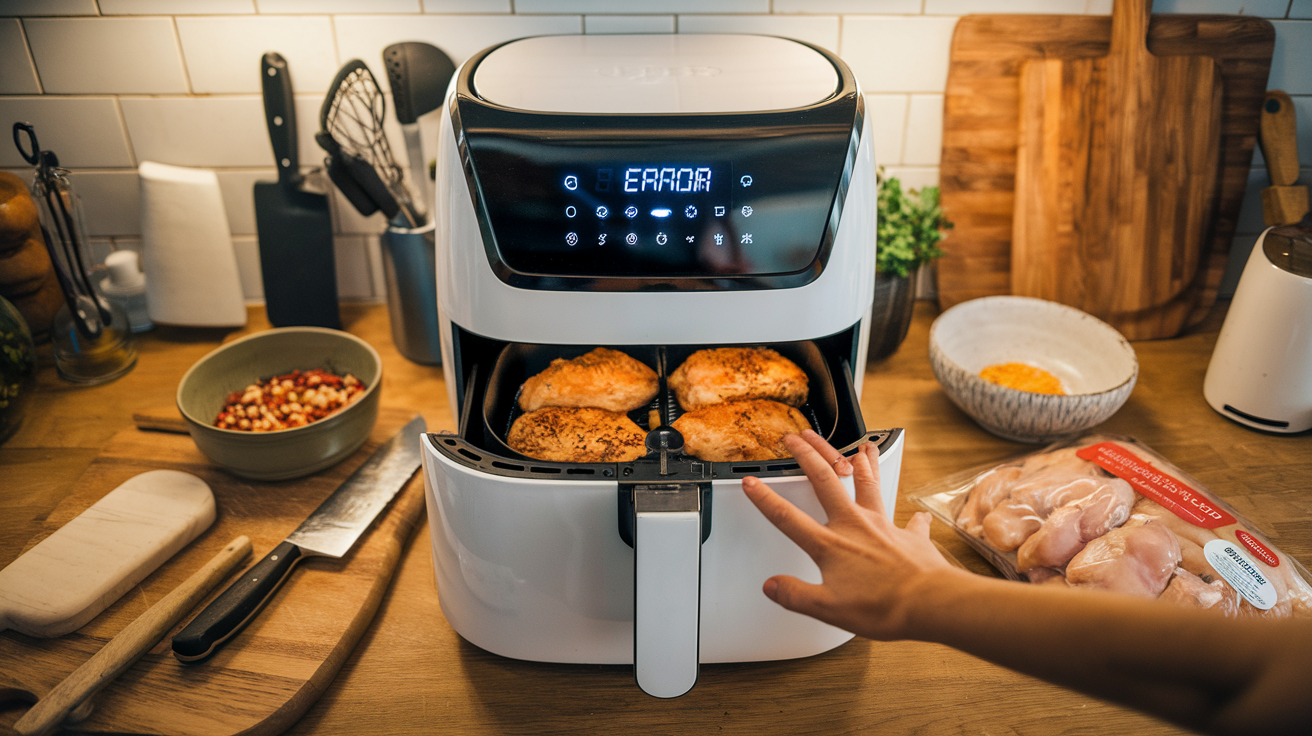
Now that we’ve explored how to maximize flavor and nutrition in your air fryer cooking, let’s address some common issues you might encounter and how to troubleshoot them effectively.
Addressing food sticking to the basket
One of the most frustrating problems air fryer users face is food sticking to the basket. To prevent this:
- Apply a light coating of oil to the basket before cooking
- Use parchment paper or silicone liners designed for air fryers
- Avoid overcrowding the basket, which can lead to sticking and uneven cooking
Dealing with uneven cooking or browning
Uneven results can be disappointing, but there are several ways to ensure consistent cooking:
- Shake the basket or flip food halfway through cooking
- Cut ingredients into uniform sizes for even heat distribution
- Avoid overlapping food items in the basket
- Rotate the position of food if your air fryer has hot spots
Managing smoke or odors during cooking
Smoke and unpleasant odors can be a nuisance. Here’s how to address these issues:
Problem Solution
Smoke - Clean the air fryer thoroughly after each use
- Reduce oil or fat in recipes
- Add water to the drawer to prevent smoke from fatty foods
Odors - Run the air fryer empty at high temperature for a few minutes
- Clean with a mixture of water and lemon juice
- Use baking soda to absorb lingering smells
Adjusting recipes for different air fryer models
Air fryers can vary in size and power, affecting cooking times and temperatures. To adapt recipes:
- Start with shorter cooking times and lower temperatures than specified
- Check food frequently and adjust as needed
- Consider the capacity of your air fryer and reduce recipe quantities if necessary
- Use an external thermometer to verify internal food temperatures
Remember that regular maintenance and cleaning are crucial for preventing many common issues. By following these troubleshooting tips, you’ll be better equipped to handle any challenges that arise during your air frying adventures.
As we move forward, we’ll explore advanced techniques for air fryer enthusiasts, building on the troubleshooting skills you’ve just learned to take your air frying to the next level.
Advanced Techniques for Air Fryer Enthusiasts

Now that we’ve covered troubleshooting common issues, let’s dive into some advanced techniques for air fryer enthusiasts who want to take their culinary skills to the next level.
Using oven-safe dishes for specialized recipes
While air fryers are designed with perforated baskets, you can expand your cooking possibilities by incorporating oven-safe dishes. This technique allows you to prepare recipes that require liquid batters or sauces, which would otherwise drip through the basket. For instance, you can use silicone molds or small ramekins to create delectable desserts or individual portions of casseroles.
Creating multi-course meals in the air fryer
Despite the size limitations of air fryers, with clever planning, you can prepare entire meals using this versatile appliance. Here’s a simple guide to creating a multi-course meal:
- Start with appetizers or sides that cook quickly
- Move on to the main course, which often requires longer cooking times
- Finish with dessert while the main course rests
Course Example Dish Cooking Time
Appetizer Crispy Air Fryer Shrimp 5-7 minutes
Main Air Fryer Chicken Parmesan 12-15 minutes
Side Air Fryer Asparagus 7-9 minutes
Dessert Air Fryer Brownies 15-20 minutes
Adapting traditional recipes for air frying
Many conventional oven recipes can be adapted for air frying with a few adjustments:
- Reduce the cooking temperature by about 25°F
- Decrease the cooking time by approximately 20%
- Use a meat thermometer to ensure proper doneness, especially for larger cuts
- Add a thin layer of water to the drawer when cooking fatty foods to reduce smoking
Exploring international cuisines with your air fryer
Your air fryer is a passport to global flavors. Try these international-inspired dishes:
- Crispy salt-and-pepper tofu (Asian-inspired)
- Air fryer fish tacos with zesty slaw (Mexican-influenced)
- Herb-infused Air Fryer Roast Chicken (Mediterranean-style)
Remember to preheat your air fryer to 400°F for optimal searing, especially when preparing dishes like steak frites or crispy chicken wings.
With these advanced techniques in your culinary arsenal, you’re well-equipped to elevate your air fryer cooking game. As we conclude our exploration of air fryer tips and tricks, let’s reflect on how these innovative approaches can transform your everyday meals into gourmet experiences.
Conclusion
As we wrap up our journey through the world of air fryer cooking, it’s clear that this versatile kitchen appliance has revolutionized the way we prepare meals. From mastering the basics to exploring advanced techniques, we’ve uncovered a wealth of tips, tricks, and hacks that can elevate your air fryer game.
Let’s recap some of the key takeaways:
- Preparation is key.
- Versatility is endless.
- Temperature control matters.
- Maintenance ensures longevity.
- Creativity leads to culinary delights.
FAQ’s
Can I use aluminum foil in my air fryer?
Yes, you can use aluminum foil in your air fryer, but with some precautions:
- Use only in the basket, not the bottom of the fryer.
- Don’t cover all the holes in the basket to allow proper air circulation.
- Avoid acidic foods that can react with the foil.
How do I prevent food from sticking to the air fryer basket?
To prevent sticking:
- Lightly spray the basket with oil.
- Use parchment paper liners.
- Preheat the air fryer before adding food.
- Flip food halfway through cooking.
Can I cook frozen foods in an air fryer?
Absolutely! Air fryers are great for cooking frozen foods.
How do I clean my air fryer?
Follow these steps for easy cleaning:
- Unplug and cool completely
- Remove and wash removable parts with warm, soapy water
- Wipe the interior with a damp cloth
- Clean the heating element gently
- Dry all parts thoroughly before reassembling
Can I bake in my air fryer?
Yes, air fryers can be used for baking! Reduce the temperature by about 25°F (14°C) from traditional oven recipes and check food frequently to avoid overcooking. Now that we’ve covered these common questions, let’s explore some advanced techniques for air fryer enthusiasts.



